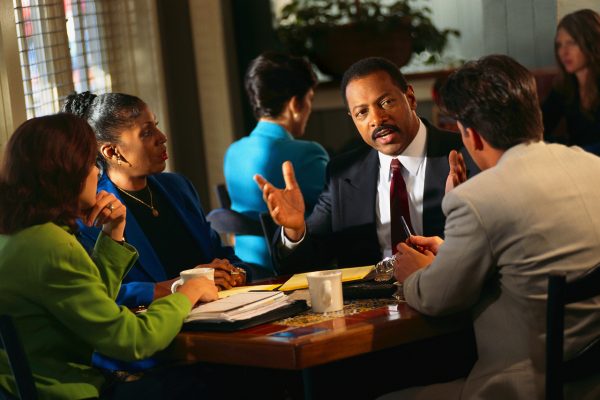The challenge of managing businesses and organisations to achieve set goals is one thing every manager must strive to have a grip over.
Fundamentally, managers set corporate objectives and at meetings communicate them to supervisors, line managers and staff as the case may be. Thus communication is an integral part and major function of management, and by implication for managers. Without it, work is done haphazardly and targets are not achieved.
Staff meetings are daily convergence in many organisations usually for brainstorming, problem solving, delivery and sharing of information, interaction and receiving of reports etc. Meetings are a critical part of the management process, very key to achievement of strategic vision and goals.
Unfortunately, most meetings fall short of the purpose for which they are convened. The skill, preparation, tact, emotional balance or intelligence of the manager are crucial elements to achieving an effective meeting.
Effective meetings are not products of how long it went. It begins with defining a purpose that is crafted into a specific agenda. Primarily, for meetings to be effective, the purpose needs to be established and clearly articulated. When the purpose is not well defined, the tendency to drift is high. As vital as this is, the ability of the manager to direct discussions around the agenda/subject is necessary. Purposeless meetings demotivate and dampen the morale of staff. Besides, it leads to waste of resources (time, energy and money).
With this in mind, it becomes imperative that managers establish concretely the purpose of any meeting before calling for it. Notifying staff of the subjects of discussions ahead of time enhances achievement of results and stimulates robust inputs. It will further reduce the time spent, thus saving time for other business activities.
The ambience of the venue where it is held is also important. It should be void of extreme conditions, noise and distractions. It should be such that will enhance the flow of thoughts, concentration and enthusiasm. The chairs, desk and lighting should make people comfortable and relaxed. A measure of ergonomic standard should be observed in setting the physical facilities for a meeting no matter how brief it is scheduled to last.
As opined earlier, effective meetings are not measured by how long they last. While there may not be any universally acceptable standards, attention span of participants should be considered. When meetings stay unnecessarily long especially when the discussions/contributions are not synchronised, the law of diminishing returns sets in.
When people are tired, their receptivity, alertness and participation is considerably affected hence proper attention should be given to time management and people’s body language. Succinctly, preparing for a meeting require well defined targets, good physical facility, skillful coordination and a measure of emotional intelligence.
About the Writer: Ighoro Alexander is a licenced and certified Human Resource Management practitioner. He is the Lead Partner, Bethel and Spring Consulting Ltd – a human resource training and development firm. Ighoro holds a Master’s degree in Agricultural Extension and actively belongs to several professional bodies in Nigeria. They include Chartered Institute of Personnel Management (CIPM), Nigerian Institute of Management (Chartered), Nigerian Institute of Training and Development. To his credit are publications on international journals and a book titled“The Power Of Self Improvement”. His interests are Performance Management, System and Structure Development, Organisational design, Leadership, Recruitment and Executive selection, Career Development etc. He is married with children.


